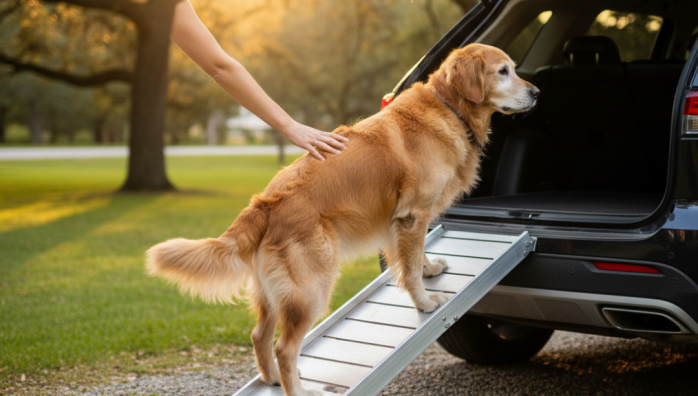Choosing Ramps for Senior Dog Mobility
by admin in Pet Care Basics 17 - Last Update November 19, 2025

I remember the exact moment I knew we needed a change. My old golden retriever, a companion of 12 years, stood at the back of the car, tail giving a weak wag, but his eyes were full of hesitation. He tried to jump in, his back legs faltered, and he let out a little yelp. It broke my heart. That day, I went down the rabbit hole of mobility aids, and I learned that choosing the right ramp is about so much more than just bridging a gap.
Why a ramp is an investment in their comfort
Honestly, I first thought of a ramp as just a convenience for me—no more heavy lifting. But I quickly realized it was a crucial tool for my dog\'s well-being. Every jump into the car or onto the bed puts a huge strain on aging joints, especially for dogs with arthritis or hip dysplasia. A ramp provides a gentle, low-impact way for them to maintain their freedom and dignity, reducing the risk of a painful fall or further joint damage. It\'s a proactive step in managing their comfort as they age.
What I learned to look for in a dog ramp
The market is flooded with options, and it can be overwhelming. After a lot of research and one purchase I had to return, I\'ve narrowed it down to a few non-negotiable features that truly matter.
The surface grip is everything
The first ramp I tried had a simple plastic surface. It looked fine, but the first time my dog’s paws were even slightly damp, he slipped. It terrified him, and we were back to square one. A high-traction surface is critical for their confidence and safety. Look for materials like rubber, high-grit sandpaper-like surfaces, or dense carpeting. My final choice had a textured rubber mat, which has been fantastic in all weather.
Incline and length matter more than you think
A short, steep ramp is just as bad as a jump. The goal is a gentle slope. A good rule of thumb I follow is that the longer the ramp, the gentler the incline will be. For a car, you\'ll need a much longer ramp than for a sofa. Before buying, I measured the height from the ground to the car bumper and used that to figure out the minimum length needed for a comfortable angle for my dog. Don\'t eyeball it; a steep ramp will be intimidating and hard on their joints.
Material, weight, and portability
This is a balancing act. You want something sturdy and stable, but if you\'re using it for a car, you also need to be able to lift and store it yourself. Aluminum ramps are often a great middle ground—they are lightweight yet very strong. Plastic ramps are lighter but can feel less stable for larger breeds. I opted for a tri-fold aluminum model. It\'s manageable for me to handle alone but feels completely solid under my 80-pound dog\'s feet.
Training is a journey of patience
Don\'t expect your dog to take to the ramp immediately. I laid ours flat on the living room floor for a day, letting him sniff it and walk over it. I\'d toss high-value treats onto it to build a positive association. Then, I propped it on a single step, rewarding him for every interaction. We worked our way up to the car over a week. Patience and positivity are key. It’s a new, strange object, and they need time to trust it. Seeing him confidently walk up that ramp into the car for the first time felt like a huge victory for both of us. While these are the steps that worked for us, every dog is different, so I always advise speaking with your vet or a certified trainer for a plan tailored to your pet\'s specific needs and health condition.












